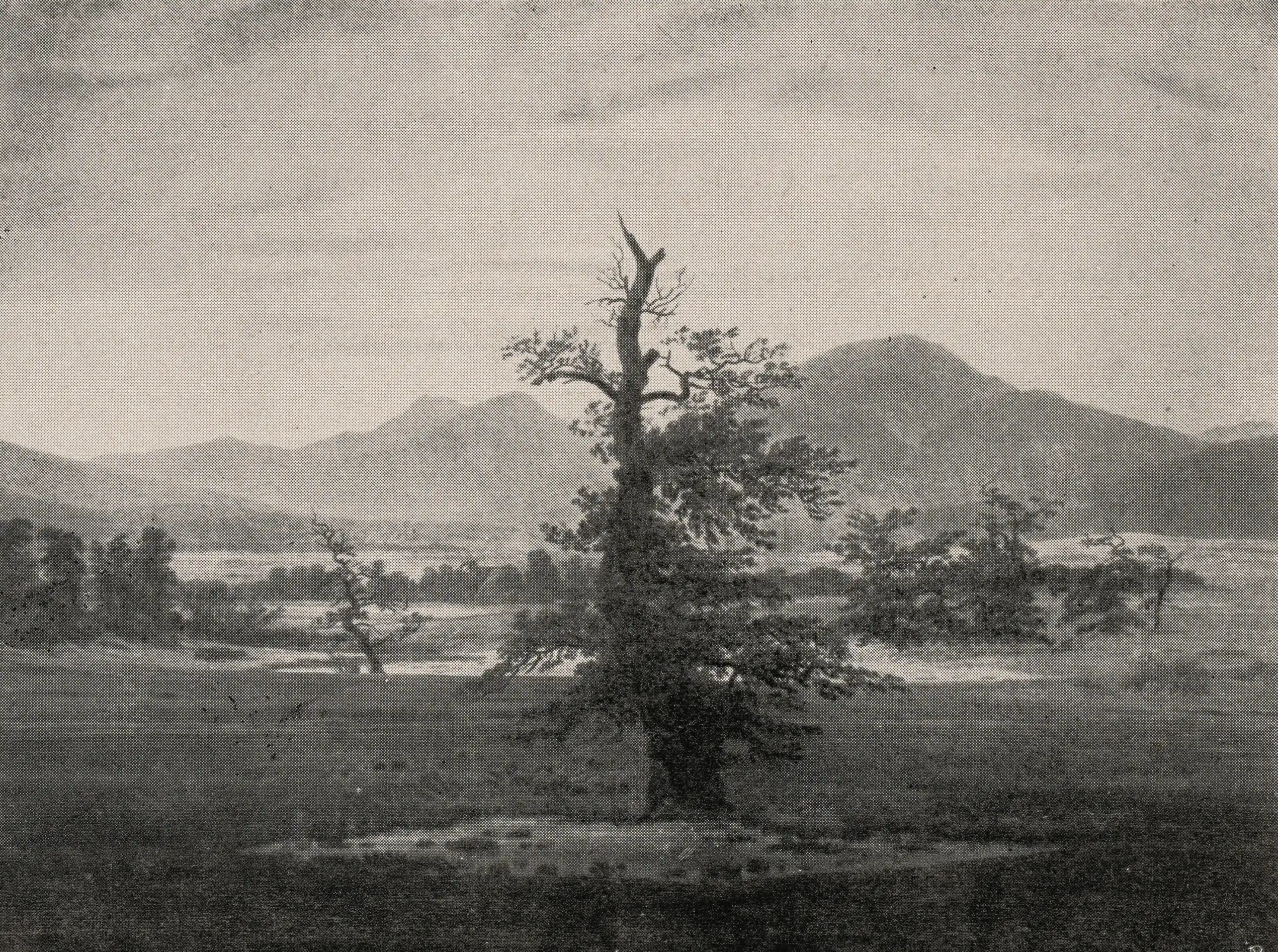Friedrich the Modernist II Light and Color
In the accompanying exhibition catalogue, Julius Meier-Graefe composed a brief text for each exhibited work. For the color scheme of The Solitary Tree, he found these eloquent words:
“In the foreground, shadowed green with a bluish, shimmering, slightly pink-tinged pond. In the middle ground, the green is brightened with yellow. Grayish-blue mountains. The sky begins with barely perceptible pale blue, which vanishes behind delicate rose-colored clouds. The clouds are darkened above
almost approaching the tonality of the mountains.”


Juxtaposition of a digital image of the painting The Solitary Tree and a black-and-white illustration from the original exhibition catalogue of 1906 (Repro photo: Christoph Irrgang)
Art critics too emphasized the special quality of light and color in Friedrich’s paintings. In 1906, one critic wrote enthusiastically about The Solitary Tree (then still under the title Harz Landscape):
“The Harz Landscape in the Nationalgalerie, with an oak tree set before a pond in the foreground, and the sun already setting behind the elongated ridge of mountains, is completely filled by the luscious transitions of the bluish shadows of the atmosphere.”